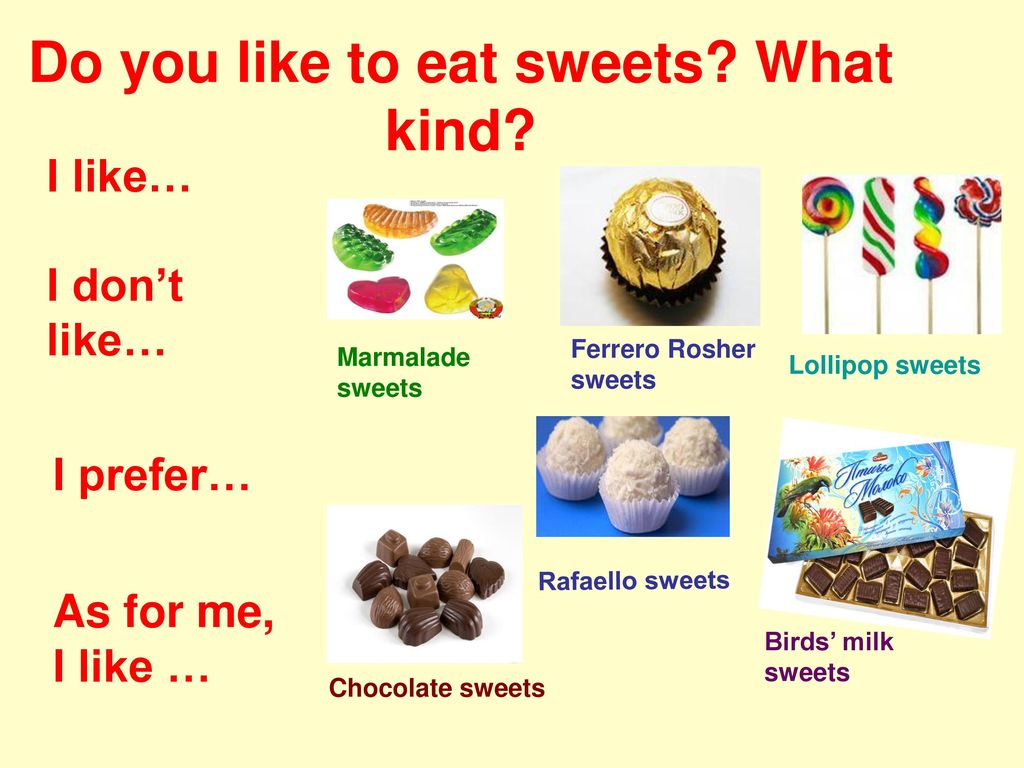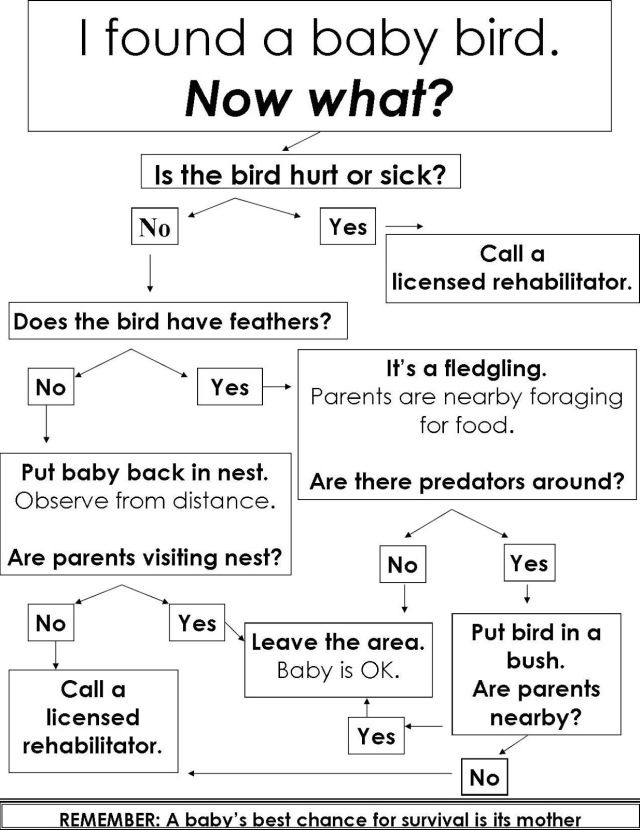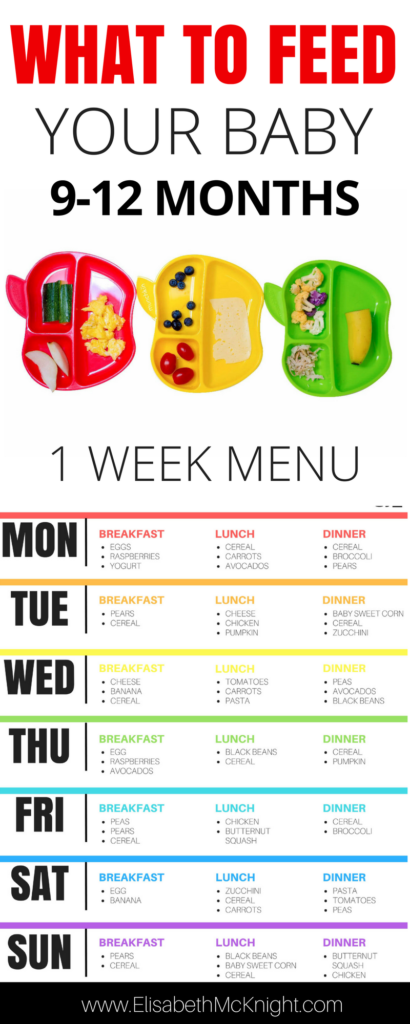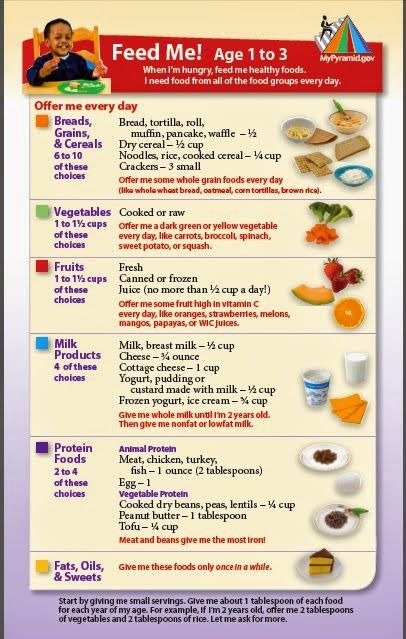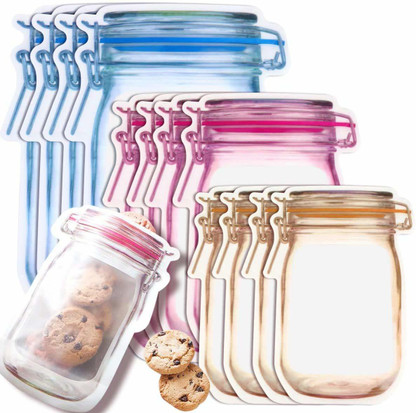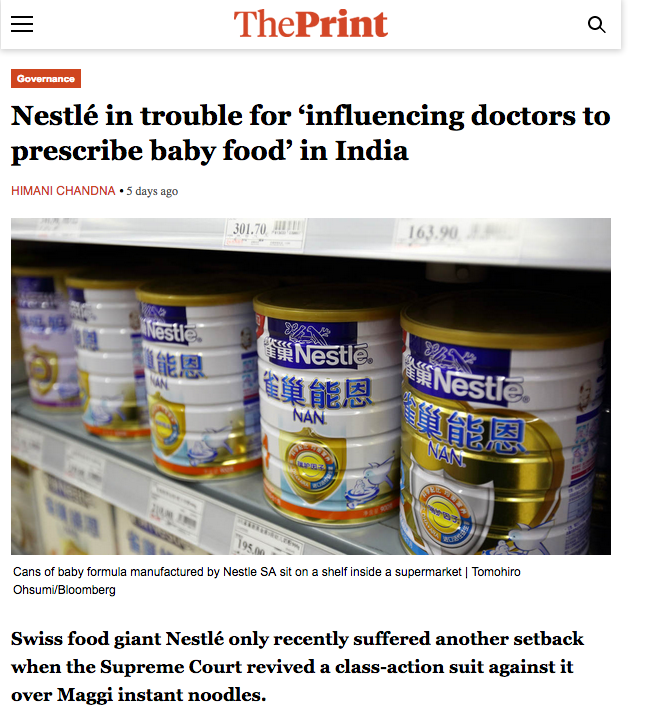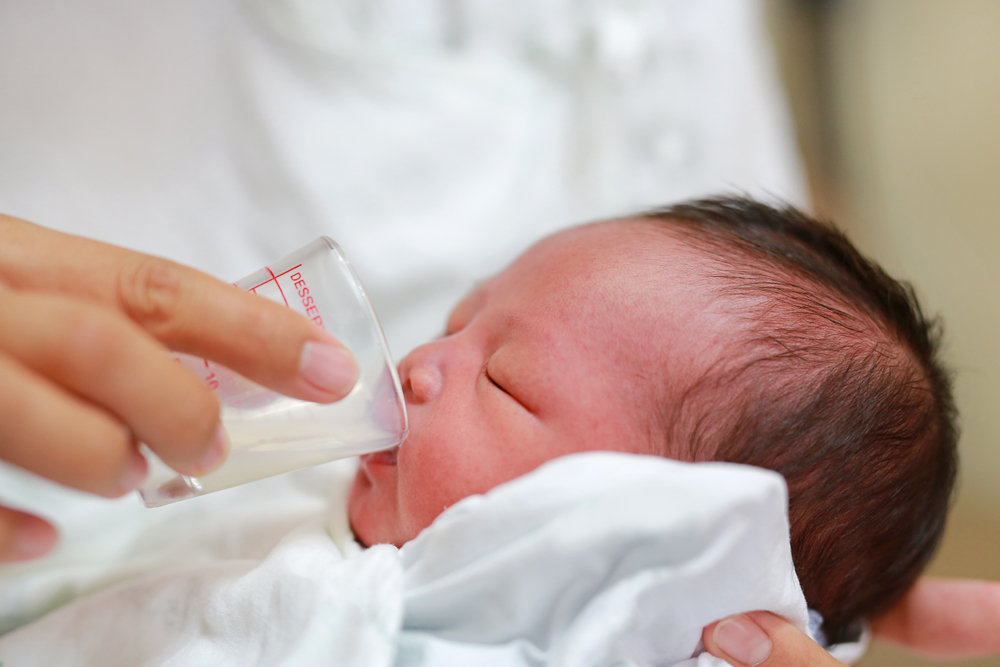What type of yogurt to feed baby
When can babies eat yogurt, and which baby yogurt is best?
Most babies can start eating yogurt as soon as they start eating solids – around 4 to 6 months. Yogurt is an excellent choice for one of your baby's first foods because it contains calcium, protein, and vitamins. The best option is plain, unsweetened, pasteurized yogurt (regular or Greek) made from whole milk and containing "live cultures."
What kind of yogurt is best for babies?
Nearly all flavored and fruit-on-top yogurts, even products marketed for babies, contain added sugar, which can contribute to tooth decay and obesity. The USDA guidelines recommend that children under 2 years old get no added sugar from their diet. Choosing plain yogurt is the easiest way to avoid added sugar.
To see whether a product has added sugar, check the nutrition label. Look at the line under "Total Sugars" to see how much of the sugar in a product is added sugar. (All yogurt contains some natural sugar in the form of lactose. )
Yogurt made from whole milk is best for babies and toddlers because they need the calories and fat in full-fat dairy products. Don't offer your child reduced-fat or fat-free yogurt before age 2 unless your healthcare provider advises it.
Greek yogurt is strained for a rich, creamy texture, and has twice as much protein as regular yogurt, making it another good choice for babies. Plus, it's often easier to find Greek yogurt in sugar-free varieties.
Is yogurt healthy for babies?
In addition to being a good source of calcium and protein, some types of yogurt contain live cultures, also known as probiotics. These are living microorganisms (bacteria) used to convert milk to yogurt, or added to yogurt afterward. They promote the growth of healthy bacteria in the gut, which researchers believe may help with digestion.
How can you tell whether yogurt has this good bacteria? The product label should state that the yogurt contains live or active cultures, which means the organisms haven't been destroyed by heat during processing. However, a label that says "made with active cultures" does not mean that the yogurt still contains living cultures, only that the yogurt was made with them (as all yogurt is).
However, a label that says "made with active cultures" does not mean that the yogurt still contains living cultures, only that the yogurt was made with them (as all yogurt is).
It can be hard to tell if a yogurt contains a significant amount of beneficial bacteria. One way is to look for the Live & Active Cultures seal by the International Dairy Foods Association. This seal identifies products that contain at least 100 million live and active cultures per gram. But participation in the program is voluntary, so a product without the seal isn't necessarily short on cultures.
You may wonder why it's okay for babies to eat yogurt, when drinking cow's milk isn't recommended until a baby is at least 12 months old.
Advertisement | page continues below
Actually, a little bit of cow's milk, like the amount in the occasional serving of yogurt, won't hurt your baby. It's just not a good replacement for the breast milk or formula that still makes up most of their diet for the first year.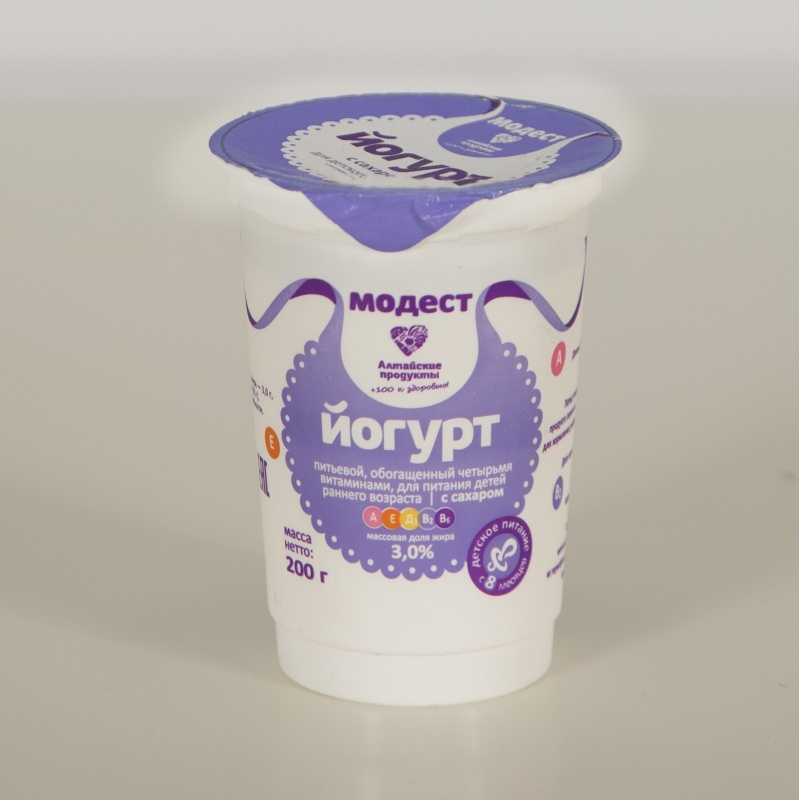
That's because babies can't digest cow's milk as easily or completely as breast milk or formula. And cow's milk doesn't have the ideal proportion of fats and nutrients that your baby gets from breast milk or formula.
For more information, see our article on when and how to introduce cow's milk to your child.
Yogurt allergies in babies
If your baby has been diagnosed with a milk allergy or shows signs of a food allergy (such as eczema), don't give them yogurt until you've checked with your healthcare provider.
Otherwise, as with any new food, wait at least three days after introducing yogurt before giving your baby another new food. That way, if your baby has an allergic reaction, it will be easier to tell what caused it.
Common symptoms of an allergic reaction include itchy red spots or patches, swelling around the lips or eyes, or vomiting within two hours of eating the recently introduced food. If you notice any of these symptoms, don't give your baby any more of the food until you've checked in with your provider.
Lactose intolerance – which is different from a milk allergy – is very rare in babies. Even if your child becomes lactose intolerant, it may be fine for them to eat yogurt. The production process breaks down much of the lactose, making yogurt more easily tolerated than other dairy products.
Yogurt recipes for babies
Your baby may not be a fan of plain yogurt, so try adding flavor (and nutrients) by mixing in fruit or vegetables. For babies who are new to solids, start with pureed fruit and cooked, pureed vegetables. For older babies, you can add soft fruit and cooked vegetables chopped into small pieces. Mashed avocado, applesauce, oatmeal, and wheat germ are also good additions.
Never give honey to a baby younger than 12 months because it may contain bacteria that can cause botulism in children that age.
Try these baby food recipes with yogurt:
- Yogurt and berry swirl
- Baby guacamole
- Tropical fruit salad
Was this article helpful?
Yes
No
Yogurt is a Great First Baby Food
JanelMS, RD, LDN, CBS
Read time: 2 minutes
Yogurt contains many nutrients that are beneficial for your little one
Yogurt is easily digestible for most babies
There are many yogurt recipe ideas for you baby!
With its versatility, yogurt is a staple food for many adults and children alike. But you might not know that yogurt also makes an excellent first food for babies.
But you might not know that yogurt also makes an excellent first food for babies.
Yogurt’s nutritional profile boasts important nutrients for babies such as calcium and phosphorus for bone strength, as well as protein and fat for babies’ rapid growth.1,2,3,4
Many yogurts are also fortified with vitamin D, which is important for many babies, particularly those who are partially or fully breastfed.5
And finally, most yogurts contain probiotics; good bacteria that at an early age may help influence immune development.6
Learn more: Probiotics 101
Why can babies have yogurt but not cow’s milk?Health professionals note that because yogurt is made by fermentation, its proteins can be easily digested by tiny tummies. This is one reason why feeding yogurt to babies under one year is recommended, while offering cow’s milk is not.
This is one reason why feeding yogurt to babies under one year is recommended, while offering cow’s milk is not.
Not only is cow’s milk more difficult to digest, but it is higher in minerals and protein which may be more difficult for a baby to tolerate in large quantities.7 While small amounts of cow’s milk before 1 year are safe, such as using a splash in scrambled eggs or a bit in baking; too much cow’s milk during infancy may lead to anemia as well as other issues.8,9,11
With yogurt, which may be offered once or twice per day for infants (¼-½ cup at a time), these are not concerns – so you can feel confident providing nutrient-dense yogurt to your baby!
Why type of yogurt should I feed my baby?Plain, whole milk yogurt is an ideal choice as a first food for babies as it contains no added sugar but also provides protein, fat, vitamin, and minerals. According to the American Academy of Pediatrics, babies should get about half of their calories from fat.3
According to the American Academy of Pediatrics, babies should get about half of their calories from fat.3
As you continue to advance flavors and foods in your baby’s diet, look for a whole milk yogurt blended with fruit, but make sure it has no added sugar or stick with plain whole milk yogurt and add in your own blended or mashed fruit.
Be sure to avoid sweetening yogurt with honey if your baby is under 1 year.10 Honey may contain the harmful bacteria called Botulism, which babies are particularly susceptible to.
Read more:
How to Incorporate Yogurt into your Child’s Diet
Starting Solids: First Foods and Textures
Yogurt recipe ideas for babyBecause store-bought yogurt is conveniently packaged in refrigerated containers, serving it to babies is a breeze as there is no prep work or blending required! The creamy texture is both palatable and soothing to teething gums. As babies get older, they’ll love self-feeding with a scoop of yogurt on a spoon.
As babies get older, they’ll love self-feeding with a scoop of yogurt on a spoon.
Plain yogurt has a neutral flavor, so it can be mixed with a variety of ingredients to transform the flavor of your baby’s food, as well as add more nutrients. As long as your baby has already had the fruits, vegetables, or spices previously without adverse reaction, you can use them in any combination with yogurt to create a new meal for your little one such as:
Yogurt mixed with no sugar added applesauce
Yogurt mixed with mashed banana
Yogurt blended with cooked peas
Yogurt mixed with mashed avocado
Yogurt blended with cooked sweet potato and a dash of cinnamon
Yogurt blended with fruit and water (for consistency) to make a smoothie
*Remember to always provide your baby with foods in a texture they can handle. This may mean providing the below recipes mashed or cut into pea-sized pieces so that they are safe for your baby.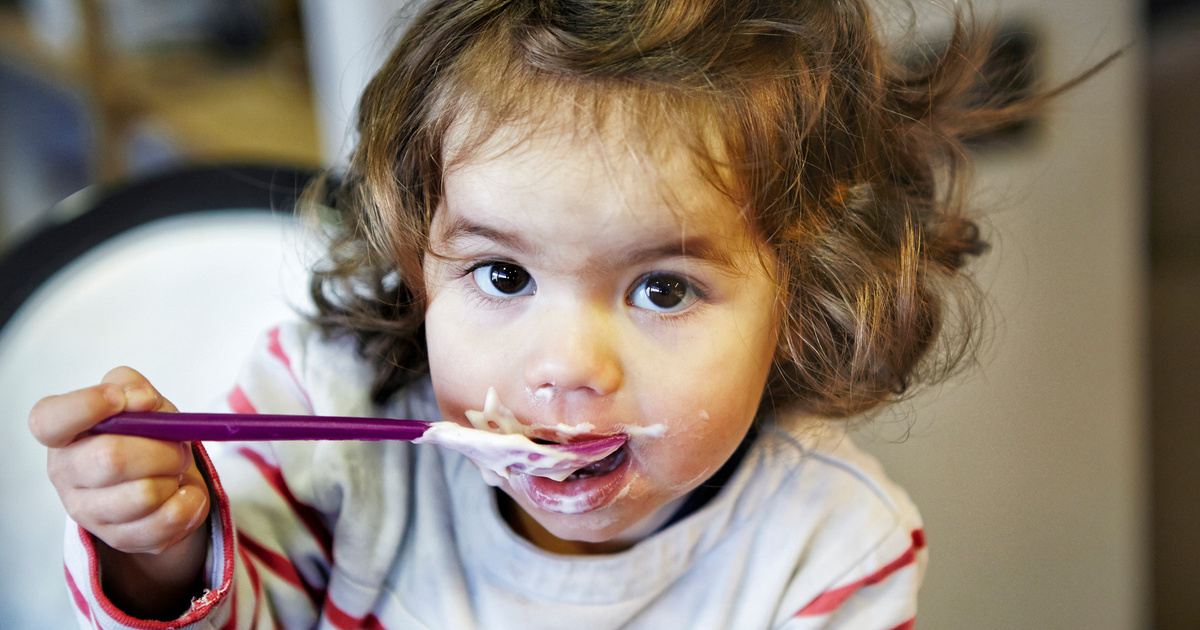
Banana & Yogurt Muffins
Fruit and Yogurt Pops
Sweet Yogurt Dip
Edamame and Yogurt Blend
Food safety when feeding your baby yogurtWhile most store-bought yogurt is conveniently packaged in smaller servings, your little one may not finish the entire container in one sitting. It’s best to scoop out the amount of yogurt you’d like to offer your child into a separate bowl, allowing you to save the remaining yogurt, covered, in the refrigerator for 1 to 2 days.
Should you feed your child directly from the yogurt container, bacteria from your little one’s mouth gets transferred to the yogurt; any leftover food must be thrown out directly after the meal.
Let's Chat!We know parenting often means sleepless nights, stressful days, and countless questions and confusion, and we want to support you in your feeding journey and beyond.
Our Happy Baby Experts are a team of lactation consultants and registered dietitian nutritionists certified in infant and maternal nutrition – and they’re all moms, too, which means they’ve been there and seen that.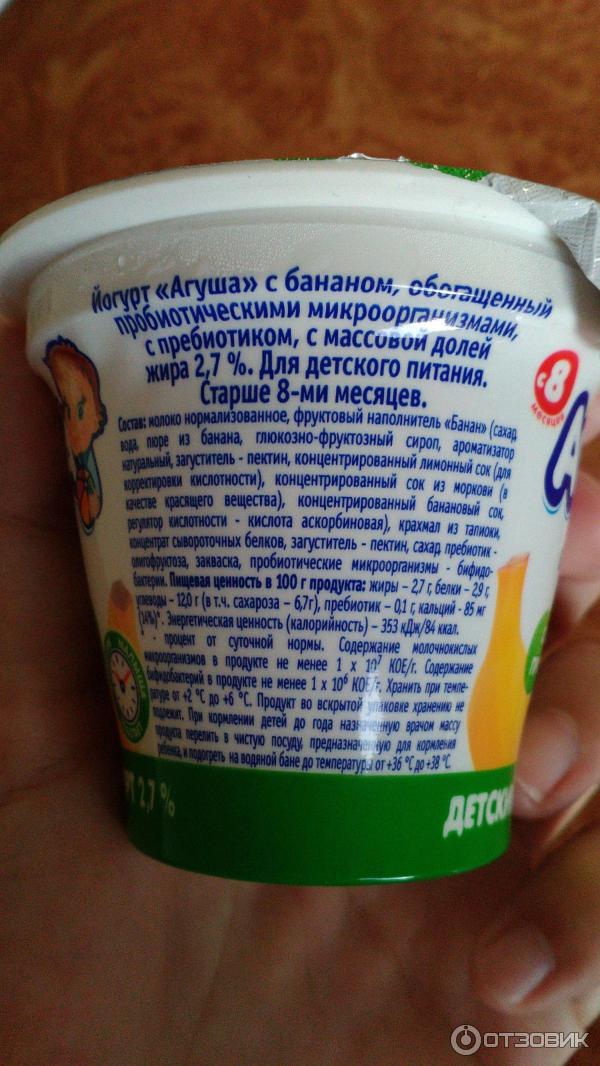 They’re here to help on our free, live chat platform Monday - Friday 8am-6pm (ET). Chat Now!
They’re here to help on our free, live chat platform Monday - Friday 8am-6pm (ET). Chat Now!
Read more about the experts that help write our content!
For more on this topic, check out the following articles and recipes:
Got a Tot? Reach for a Yogurt
Nutrient Needs and Feeding Tips for 6 to 12 Month Olds
Introducing Major Food Allergens to your Infant
Avoid Giving your Child too much Salt and Sugar
Sources
Children's yogurts - a hidden threat
/ All materials
Star mom's opinion. Yana Laputina, TV presenter:
“My daughter Teya is three years old, and for three years I have been trying to find a yogurt that would suit me. Some yoghurts are not of good quality. I try to buy those where GOST is written, not TU. Andrey Mosov, head of the expert department of NP Roskontrol, doctor: “Yoghurts for children from 3 years old, as a rule, contain much more sugar than yogurts for children from 8 months old. If we take our sample, for example, in yogurt "Zdrivery" (marking - from 3 years old) there is almost 2 times more sugar than in "Tyome" . Such an amount of sugar for a child under 3 years old is a big burden on the liver and pancreas. nine0012 Your child is at increased risk of developing diseases such as diabetes and obesity. That is why, if possible, there should be no added sugar in complementary foods at all. Also, yogurts for children over 3 years old may have a higher acidity, which is also not good for babies. In our case, Rastishki has a rather high acidity - both drinking and viscous. Children's nutritionists say that sugar in dairy products for children should be no more than 7-8%. So, there is little calcium in children's yoghurts. But protein is more than enough. And, in the literal sense: in most yogurts there is more protein than indicated on the label. In yogurt "Theme" for children from 8 months of age, the mass fraction of protein is 3.3%, which exceeds the standard for protein content in products for children of this age. Why is it important? The high protein content has a negative effect on the child's kidneys, and also increases the risk of allergic reactions. Irina Berezhnaya, pediatric gastroenterologist, PhD, Department of Pediatrics, Russian Medical Academy of Postgraduate Education: “Both in our country and in Europe, cow's milk proteins rank first in the frequency of allergic reactions in children under one year old. Allergy symptoms vary from skin rashes to digestive disorders - regurgitation, diarrhea, colic. In severe cases, there are also respiratory manifestations - runny nose, cough, difficulty breathing. Therefore, it is necessary to introduce yogurt into the baby’s diet very carefully, and taking into account the content of fruit additives and sugar in it, this is actually a product that is not suitable for children under one year old. At 8 months, giving such fruit yogurt to a child is not worth it. For the little ones, it is better to choose yogurt without sugar and additives. nine0012 In the composition of three yoghurts: "Tyoma" strawberry-banana, "Rastishka" strawberry and "Drinking Rastishka" strawberry, the dye is black carrot juice. On the website of the yogurt manufacturer it is written that black carrots are not carrots at all, and not even a related crop, but a plant of the Asteraceae family - goat, or scorzonera. nine0003 Zhanetta Gorelova, manager Laboratory of Nutritional Epidemiology of the Research Institute of Hygiene and Health Protection of Children and Adolescents of the Scientific Center for Children's Health of the Russian Academy of Medical Sciences, Doctor of Medical Sciences, Professor: “In itself, this plant is considered safe and even useful. It grows in the south of Europe - in Italy, Spain, France. It contains inulin, vitamins C, B1, B2, PP, and when cows graze on a pasture where black carrots grow, their milk yield even increases. But should black carrot juice be added to yogurts intended for children, especially babies under one year old? If we add something to a natural product, it already loses its properties of a natural product. Looking for "black carrot juice" on the Internet. One of the first links is to a site where a certain Chinese-made concentrated powder is sold, at $ 15-25 per 1 kg. We sincerely hope that manufacturers of yoghurts for children from 8 months add natural juice of a southern European vegetable to their products, and not a Chinese concentrate. The choice is up to the parents: everyone decides whether the child needs yogurt with sugar and additives, or it is better to buy natural yogurt or regular children's kefir. nine0003 October 24, 2014 Advertising Advertising The name of the Steacher Organization Contact name Position Phone E-mail Name I have read and accept the Rules for the Functioning of the Independent Quality Control System "Roskontrol". Product name Product category Brand Barcode Production information Main characteristics Product photo  6 CFU/1g). nine0003
6 CFU/1g). nine0003 Up to three years and older
Too much sugar, too little calcium
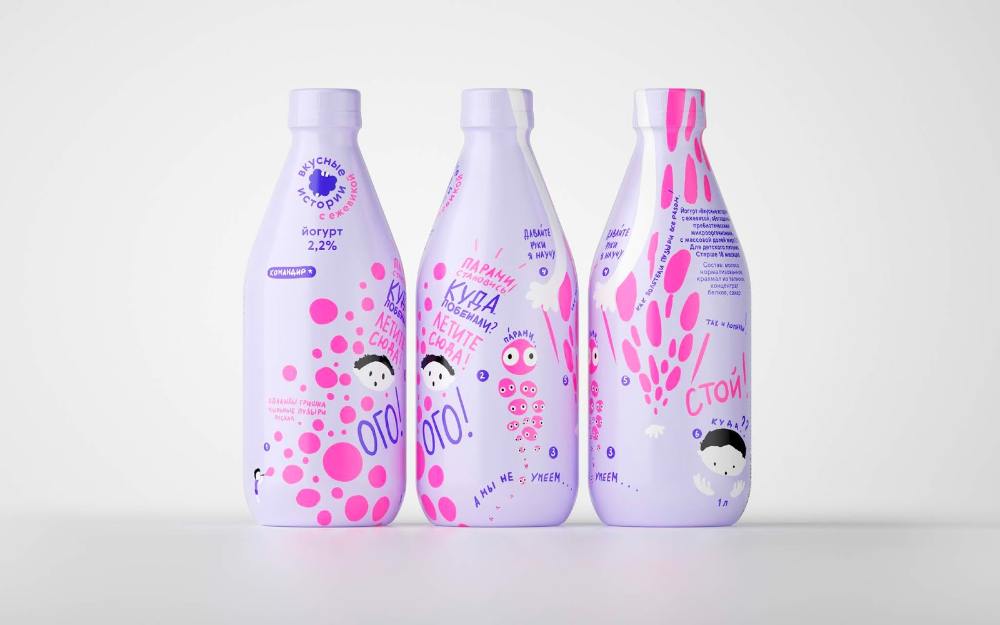 How about really? In yoghurts "Zdrivers" and " Drinking plant" sugar turned out to be 10%. Slightly less (6-7%) in drinking yoghurts for babies - "Agusha" and "Tyoma" . But there is one thing: if we count the amount of sugar per package, then "Agusha" and "Tyoma" take the lead - just imagine, there are 3 pieces of sugar in one jar! That's half the daily sugar requirement for an eight-month-old baby.
How about really? In yoghurts "Zdrivers" and " Drinking plant" sugar turned out to be 10%. Slightly less (6-7%) in drinking yoghurts for babies - "Agusha" and "Tyoma" . But there is one thing: if we count the amount of sugar per package, then "Agusha" and "Tyoma" take the lead - just imagine, there are 3 pieces of sugar in one jar! That's half the daily sugar requirement for an eight-month-old baby. 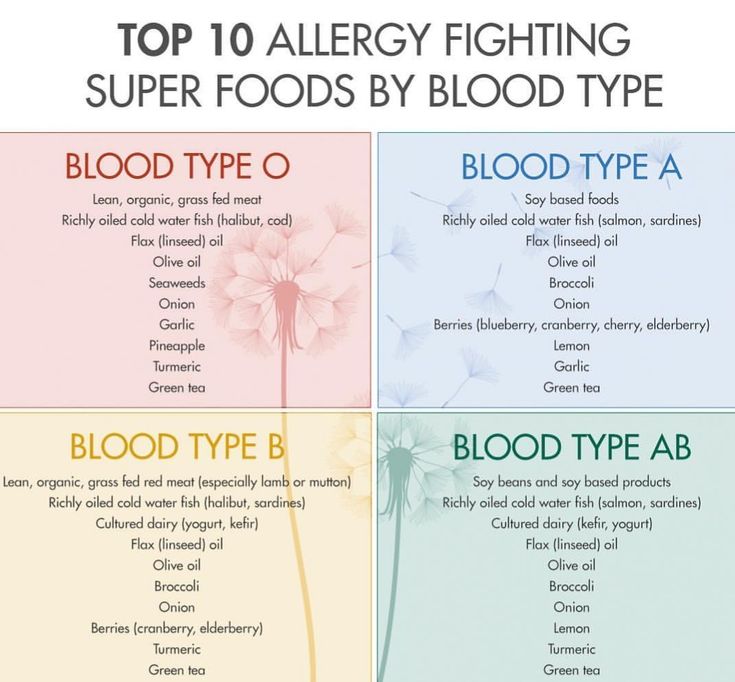 Note that this protein is cow's milk protein, the number one allergen, according to children's doctors.
Note that this protein is cow's milk protein, the number one allergen, according to children's doctors. Why are there black carrots in yogurt?
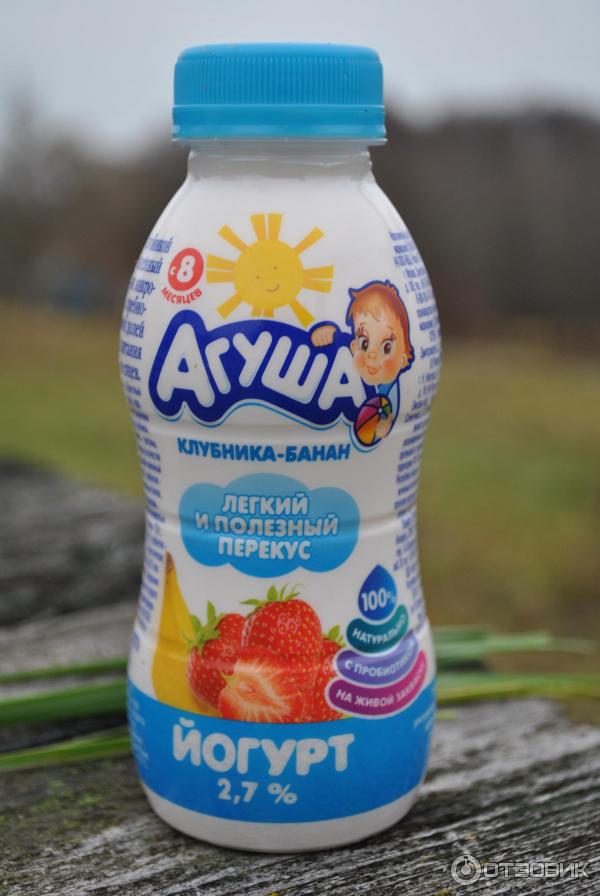 Roskontrol experts decided to figure out what kind of plant it is and why it is added to children's yogurts.
Roskontrol experts decided to figure out what kind of plant it is and why it is added to children's yogurts.  Any exotic plants that do not grow in the area where the child lives are not recommended for use in children's products. Not to mention the fact that officially this plant is not included in the list of approved for baby food. nine0012
Any exotic plants that do not grow in the area where the child lives are not recommended for use in children's products. Not to mention the fact that officially this plant is not included in the list of approved for baby food. nine0012 Examination details
Conclusions

9 ×
Tariff
You have selected subscription level Free .
The subscription price is now 0.00₽ .
Subscriber Registration Already have an account? Login here
Username nine0003
Password
Name
Surname
Full Name LEAVE IT BLANK
Processing...
At what age can yogurt be given to children and how to prepare it at home?
One of the favorite treats for both adults and children is yogurt. This product is obtained by adding microorganisms that promote fermentation to milk - thermophilic streptococcus and Bulgarian stick. This distinguishes it from other fermented milk products and provides its beneficial effect.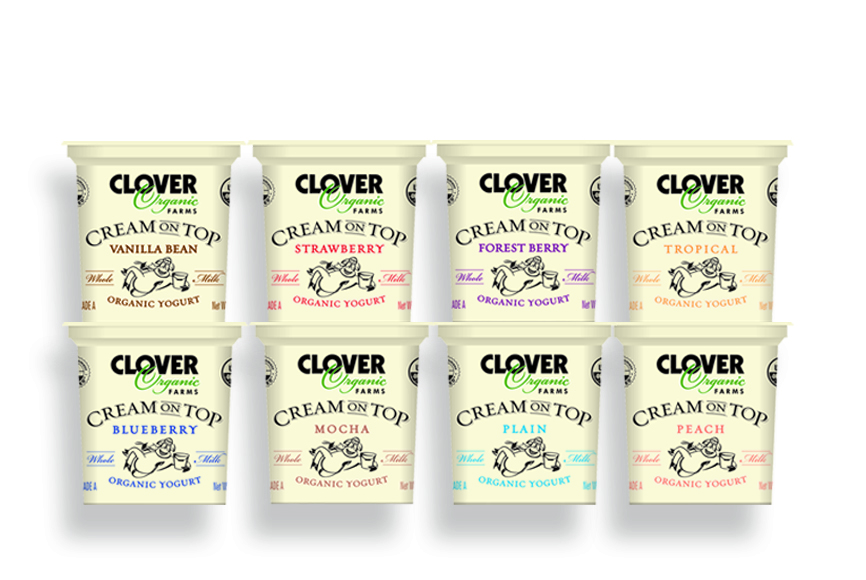 At what age can you start giving your baby yogurt? What is the benefit for the child from this product? Can it negatively affect the child's body? How to make healthy yogurt at home? Is it possible to feed a child with store-bought yogurt and how to choose the right quality yogurt for babies? nine0012
At what age can you start giving your baby yogurt? What is the benefit for the child from this product? Can it negatively affect the child's body? How to make healthy yogurt at home? Is it possible to feed a child with store-bought yogurt and how to choose the right quality yogurt for babies? nine0012
Contents
Yogurt - what is it good for?
- Yoghurt is a source of protein that is easily digested in the child's body;
- This fermented milk product contains a lot of calcium, which is important in the formation of bones and strengthening of teeth;
- Yogurt contains many vitamins A, B, potassium, chlorine and phosphorus. Yogurts contain many vitamins and microelements that are important for the growth of a child;
- The probiotics in this product are good for digestion. and immunity Yogurt is useful to eat after taking antibiotics, it restores the microflora in the intestine; nine0197
- If you eat yogurt every day, the body produces interferon, and it increases the protective functions of the body;
- Children's yogurt can be liquid (you can drink it) and thick (pectin is added to it), which allows you to diversify the baby's complementary foods with this product.
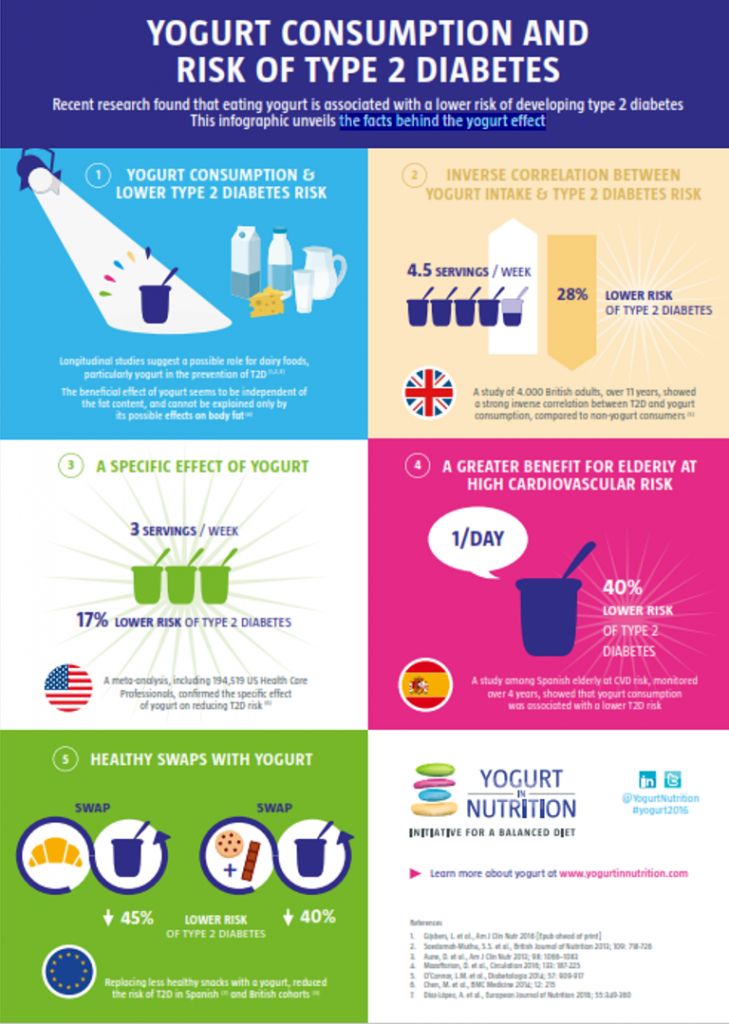
When can yogurt be dangerous?
Yogurt itself cannot harm a child, but since it is a perishable product, there is a danger of feeding the baby expired and spoiled yogurt. Always carefully check the date of manufacture of the product and the expiration date .
There are so many fermented milk products in the stores now that you can accidentally choose yogurt that is not intended for children in such abundance. You need to be careful not to make such mistakes.
Are you allergic to yogurt?
A baby may be allergic to yogurt in two cases:
- if the fermented milk product contains berries and fruits;
- if the baby is allergic to cow's milk protein.
At what age are children offered yogurt?
Pediatricians recommend giving yogurt to formula-fed babies from the age of 8 months. Breastfed babies are introduced to complementary foods from 9 months.
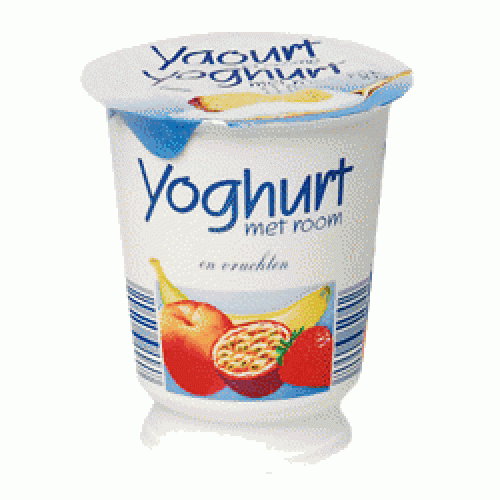
How to properly introduce into the diet?
The first acquaintance of the baby with yogurt is best done during breakfast, offering him one spoonful of the new product . This is done so that during the day it is possible to assess the child's condition - whether there is an allergy to yogurt. If there is no reaction, then in the future, yogurt is given to the child along with fruit foods, during an afternoon snack. This is usually the fourth feeding of the day. Yogurt can also be combined with cookies and cottage cheese. nine0003
Yogurts not marked “for children” with live bacteria are given to a child after two years. What portion of yogurt is recommended for children to eat at an early age? The daily volume of this product should not exceed half the norm of all fermented milk supplements received by the child. Children under 1 year old are given 80-100 ml of yogurt, and at the age of 1 to 3 years, the portion is increased to 200 ml.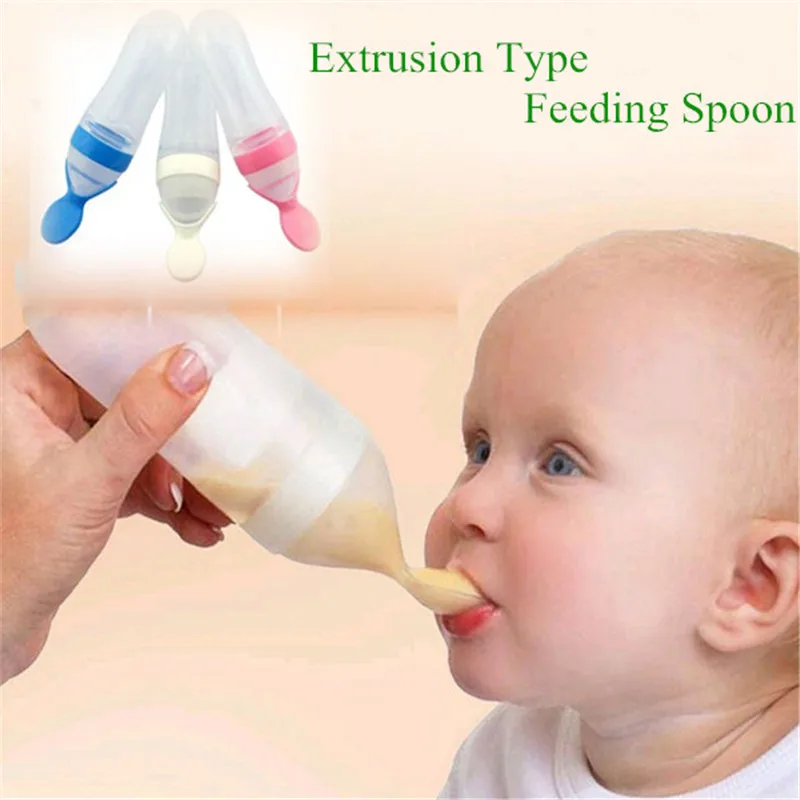
How to make your own yogurt
Yogurt starter can be bought at any pharmacyTo make yogurt, you need to buy a special starter. You will also need fresh boiled milk. It is advisable to sterilize the dishes in which you will prepare the yogurt. nine0003
In a yoghurt maker
Cool the boiled milk to a temperature of 38-40 degrees, not higher, add the starter. At temperatures over 40 degrees, bacteria will not be able to multiply and yogurt will not turn out. After adding the leaven to it, mix thoroughly. Pour milk into sterile containers. Now the yogurt maker will do its job. It constantly maintains the desired temperature at which bacteria actively multiply. The main advantage of the yogurt maker is the long-term maintenance of the temperature necessary for the “work” of the starter microorganisms. nine0003
The process of preparing the product in the yoghurt maker takes approximately 8-10 hours. You can put milk at night, and in the morning you can eat yogurt.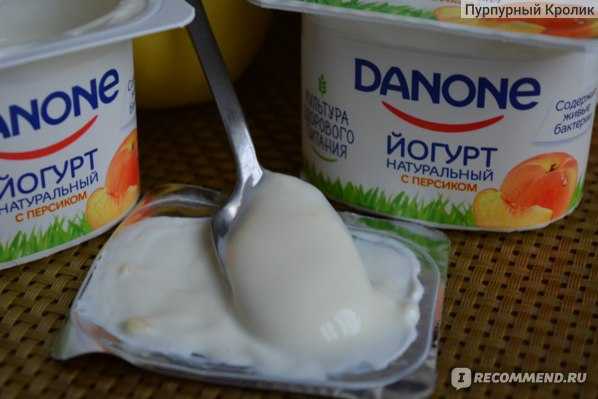 Store it in the refrigerator for no longer than 4-5 days. It is better for a child to give this product in the first two or three days after fermentation - the longer the yogurt is stored, the less beneficial bacteria it contains.
Store it in the refrigerator for no longer than 4-5 days. It is better for a child to give this product in the first two or three days after fermentation - the longer the yogurt is stored, the less beneficial bacteria it contains.
Making yogurt in a yogurt maker:
In a multicooker
You can also make yogurt in a multicooker if it has a Keep Warm mode. Boil 2 liters of milk, then cool it to the desired temperature (38-40 degrees). We add sourdough to it. Having closed the device with a lid, set it to the desired “yogurt” mode. Cooking time - 8-10 hours. When the yogurt is ready, pour it into glass containers and put it in the refrigerator. You can eat it after 2-3 hours. nine0003
Homemade yogurt in a slow cooker:
In a thermos
Add the starter to boiled and cooled to 40 degrees milk, mix. Pour it into a thermos, after dousing the thermos with boiling water . This must be done to clean the thermos from pathogenic bacteria. We close the thermos, wrap it in a towel and put it in a warm place - near the battery in winter or in a sunny place in summer.
After 4-7 hours the product in a thermos is usually ready. Now you need to pour the yogurt into sterile cups or jars. Then we send it to the refrigerator for at least a couple of hours. nine0007 In a cold environment, bacteria growth stops, preventing further mowing of milk . In yogurt, you can put pieces of fruit, a little jam or syrup.
How to make homemade yogurt in a thermos:
Homemade yogurt for children under one year old - recipes
It's good if the baby liked the taste of yogurt without additives.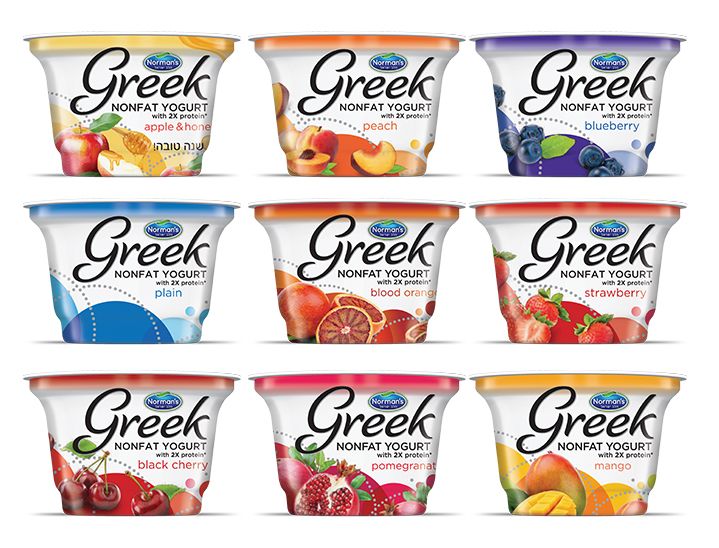 However, some kids are happy to eat sour-milk products, if you diversify their taste with fruits. What ingredients go with homemade or store-bought baby yogurt? nine0003
However, some kids are happy to eat sour-milk products, if you diversify their taste with fruits. What ingredients go with homemade or store-bought baby yogurt? nine0003
- With apples or applesauce.
- Peach or peach puree.
- Pumpkin.
- Pear.
- Banana.
- Curd.
- Cookies.
Important! When you mix yogurt with fresh fruit, you should eat it right away, but you can add canned fruit puree from the store in advance.
Seasonal fruit salad with yogurt
[sc name=”rsa” ]
Yoghurt is an excellent dressing for fruit salads. Since it is better for children to give only seasonal fruits, we will conditionally divide salads into summer and winter. Such a delicacy can be pampered by children over 1 year old. Let's look at some recipes for fruit salads with yogurt.
Add fruits of your choice and remove those that are not at hand. Fruit salad is always delicious!
Fruit salad is always delicious!
How to make summer salad:
You will need:
- small apple;
- pear;
- plum - 3 pcs.;
- melon - 1 slice;
- grapes - a small handful.
Wash fruit thoroughly and remove pits and skins. Cut the pulp into small cubes, season the salad with yogurt. If you need to sweeten the dish, add a little honey.
Winter fruit salad:
You will need the following ingredients (1 each):
- apple;
- banana; nine0197
- kiwi;
- persimmon;
- tangerine.
Remove the skin and seeds from the fruit and cut the flesh into cubes. Lay the fruits in layers, seasoning each of them with yogurt. You can sprinkle a little sugar on each layer.
It is best to treat your baby to this salad as soon as it is prepared, so that the fruit does not lose its beneficial properties. To increase appetite and to interest the child, you can try to design a new dish in the form of a house, car or some kind of animal. nine0003
nine0003
How do you make yoghurt taste great, and what are some good additions?
Dried fruits. Raisins and dried apricots are very useful on their own. If you add them to yogurt, then it will not lose its value and will acquire a sweetish note. Moreover, children always like to catch dried fruits from yogurt and eating it turns into a kind of game.
Vanilla. She has an excellent aroma, from which many are delighted. If you add a little vanilla to the finished yogurt, it will be incredibly fragrant and appetizing. The main thing is not to overdo it, otherwise the product will be slightly bitter. nine0003
Nuts. Nuts are rich in fats, which are so necessary for a growing child's body. They help make yogurt not only tastier, but also more satisfying. Cashews, almonds, hazelnuts, and walnuts make great additions.
Muesli. Also able to change the taste of yogurt and make it more satisfying. The flakes become soft and melt, which many children like.
Which starter to use?
If you want to prepare healthy yogurt for your baby, do not use store-bought yogurt as a starter, as the fillers and microflora of the product will give you unpredictable results. Buy only a special starter that contains the bacteria needed to make yogurt. nine0003
Purchase the starter culture at a pharmacy (or store), check its expiration date. Make sure it has been kept in the refrigerator. When preparing yogurt for a child under one year old, always take a new starter.
There are also starter cultures from which other fermented milk products are prepared - these are streptosan, bifivit and vitalakt. They contain other bacteria. Occasionally indulge your little ones with foods made from these starters for a change.
Choosing a good yogurt for a child in a store
- Look at the label to see if the product is labeled “yogurt”.
- Read the ingredients - baby yogurt should only be made with milk and starter. If the composition contains flavors, preservatives and thickeners, refuse to buy.
- Yoghurts containing pieces of fruit may be purchased but should be given carefully. The baby may have an allergy. It is best to add store-bought fruit puree to regular plain yogurt. nine0197
- For a small child, especially the first year of life, it is better to choose semi-fat or classic milk yogurt with a fat content of up to 3.2 g. For a child from 2 to 5 years old, classic, milk-creamy and creamy-milk yogurts are suitable. Fat-free and reduced-fat yoghurts are not foods of choice for children and should only be used on the advice of a doctor.
- Check expiration date. Valid value is 5-7 days. Yoghurts that can be stored longer contain preservatives.
Do not buy a product that can be stored without refrigeration. nine0197
- Yoghurts of currently known manufacturers - Aktimel, Miracle, Ehrmann, Rastishka, Immunele and others do not belong to baby food. They have a longer shelf life, they contain dyes and flavors identical to natural ones. They are allowed to be given to children from 3 years old, this is indicated on the product packaging.
- If the yogurt is marketed as a bioproduct, the microbial concentration data must be on the label. Usually, by the end of their expiration dates, their content should be at least 107 CFU. nine0197
Agusha
Under the brand name "Agusha" 2 types of yoghurts for children up to 1 year old are produced
- viscous, to be eaten with a spoon;
- drinkable, which can be drunk from a cup or bottle.
Both recommended from 8 months. Agusha is distinguished by the widest range of children's yoghurts.
The shelf life of Agusha yoghurts is 14 days.
Tyoma
Tyoma only has drinking yoghurts. Bioyoghurts Tyoma are recommended from 8 months. nine0003
Ingredients: whole milk, powdered and skimmed milk, sugar, fruit puree and juice, thickener (corn starch), natural color (carrot juice), acidity regulator (concentrated lemon juice), Bioyoghurt Tyoma contains 3.2% protein, 2 .8% fat, 11.5%, sugar 5.8%, calories 84 kcal.
The introduction of yogurt to the child's menu is something that cannot be neglected, because the benefits of this product are obvious. The Bulgarian stick contained in it has a detrimental effect on various pathogenic bacteria in the body. Therefore, yogurt can be called a natural probiotic that protects the health of your crumbs. nine0003
Tips for consumers: how to choose the right yogurt?
Myths about yogurt - the benefits and harms of yogurt for children
Although yogurt has long been a well-known product, there are many myths around it. Consider the most popular of them.
Myth 1. Yoghurt is a source of vitamins missing in the body. It is not true. Yes, yogurt contains vitamins necessary for the child's body, but their amount is very small. To replenish the body with the missing vitamins, the child will have to drink liters of yogurt. nine0003
Myth 2. Live yogurt can have a long shelf life. This is a delusion of modern mothers who believe that technology has taught a quality product not to deteriorate for a long time. Not true. All-natural yogurt can be consumed within a week and only if it is properly stored. After this period, all beneficial bacteria in the dessert die and it can no longer be called alive. Long-term storage yogurts contain preservatives in their composition, therefore they are not natural and are not recommended for children. nine0003
Myth 3. Yogurt is rich in calcium, like all dairy products. This is not entirely true. Calcium enters the body of a cow that gives milk with food. If it is not in grass and feed, then it is not in milk, and it will not be in yogurt. Therefore, in order for the milk you bought (and, accordingly, yogurt) to contain calcium, you must know for sure that the cow received it, for example, with special feed.
Myth 4. Yogurt is good for the kidneys. In fact, dairy products really cleanse the body of toxins, but fermented milk yogurt is not recommended for children with sand or kidney stones. Nephrologists in this case require to completely exclude it from the diet. nine0003
Myth 5. Yogurt should not be taken if urate is detected. On the contrary, yogurt should be drunk to children who have been found to have them, since fermented milk products are the best way to remove urates from the body.
Myth 6. Any yogurt benefits the body. The biological value of yogurt is reduced to zero after its pasteurization, so thermally processed yoghurts have absolutely no benefit - they no longer have live bacteria.

